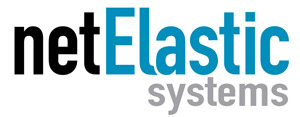With the number of internet connected devices increasing rapidly throughout the world, the scarcity of IPv4 addresses is becoming more problematic. The IPv4 shortage is particularly acute for international broadband providers, which have less access to IPv4 addresses. Although the 4.3 billion addresses supported by IPv4 seemed like a lot in 1983 (when IPv4 was created), it is woefully inadequate today given the growth of the internet and internet-connected devices.

Although the battle cry to migrate to IPv6 has gone out, the migration to IPv6 has been slower than predicted and the majority of IP traffic is still IPv4. Google collects statistics about IPv6 adoption and based on data from November 29, 2020, 32% of users accessed Google over IPv6. This also means 68% of users were still accessing Google over IPv4.
As a result, network operators have to overcome the problem of increasing demand for IP addresses (caused by the proliferation of connected devices) in an environment of IPv4 exhaustion.
The Role of Network Address Translation (NAT)
One approach to deal with the finite number of IPv4 addresses is to share the remaining IPv4 addresses among larger numbers of customers. To accomplish this, Network Address Translation (NAT) enables a single router to act as an agent between the internet and a local private network, so that one public IP address can represent hundreds, or even thousands of devices within the private network.
By sharing a public IP address among many private IP addresses, NAT limits the number of public IP addresses an organization has to use, conserving its IPv4 addresses. As a result, NAT has become a must-have solution to prolong the use of IPv4 addresses and successfully transition to IPv6.
Carrier Grade Network Address Translation (CGN) is a large-scale NAT that translates private IPv4 addresses into public IPv4 addresses. CGN employs Network Address and Port Translation methods to aggregate multiple private IPv4 addresses into fewer public IPv4 addresses.
CGNAT Solutions
There are many stand-alone CGNAT solutions in the market with specialized features and functions, and most of these solutions run on proprietary hardware. However, there is one commonality among these stand-alone solutions: High Cost.

netElastic CGNAT
netElastic CGNAT is a cost-effective alternative to higher priced solutions. netElastic provides high-performance Carrier Grade Network Address Translation services to extend the life of IPv4 address space, while also transitioning to IPv6. For service providers looking for an economical CGNAT, netElastic delivers unparalleled value with industry leading price/performance.
netElastic CGNAT is built on high-performance virtual router technology, including a scalable software architecture that delivers a high-level of translation performance while supporting a broad range of additional routing capabilities.
Dual Stacking IPv4 and IPv6 Addresses
Broadband providers face the challenge of growing their networks using IPv6 while continuing to support IPv4, since most customers are trying to reach IPv4 destinations. With the migration to IPv6 continuing at a slow pace, IPv4 and IPv6 will need to coexist for many years to come.
To help with this coexistence, netElastic recommends service providers use dual stack to enable devices to run IPv4 and IPv6 in parallel. Service providers can then deliver native IPv6 networking while still supporting IPv4 until it’s no longer needed. CGNAT on the IPv4 side of the dual stack implementation also allows service providers to maintain connectivity to IPv4 destinations, while reducing the number of IPv4 addresses needed for a growing subscriber base.
Benefits of netElastic CGNAT
netElastic CGNAT delivers up to 360 Gbps throughput and supports up to 6 million concurrent sessions. Other features/benefits include:
- Built-in support for application layer gateways to ensure applications are addressable and operate reliably and transparently through CGNAT.
- Advanced logging capabilities with configurable level of detail to help meet stringent compliance requirements and government mandates.
- Using DPDK and advanced packet processing, netElastic CGNAT can achieve near line-rate throughput on 10G, 25G, 40G, and 100G interfaces.
- Session controls allow service providers to select the quantity and duration of subscriber NAT sessions.
Deployment Flexibility
netElastic CGNAT can be deployed as an appliance, or as software running on your dedicated hardware or virtual machine.
If you’re not interested in purchasing a high-cost CGNAT solution, and would like to explore a more cost-effective CGNAT with excellent price/performance, please click here to learn more.
